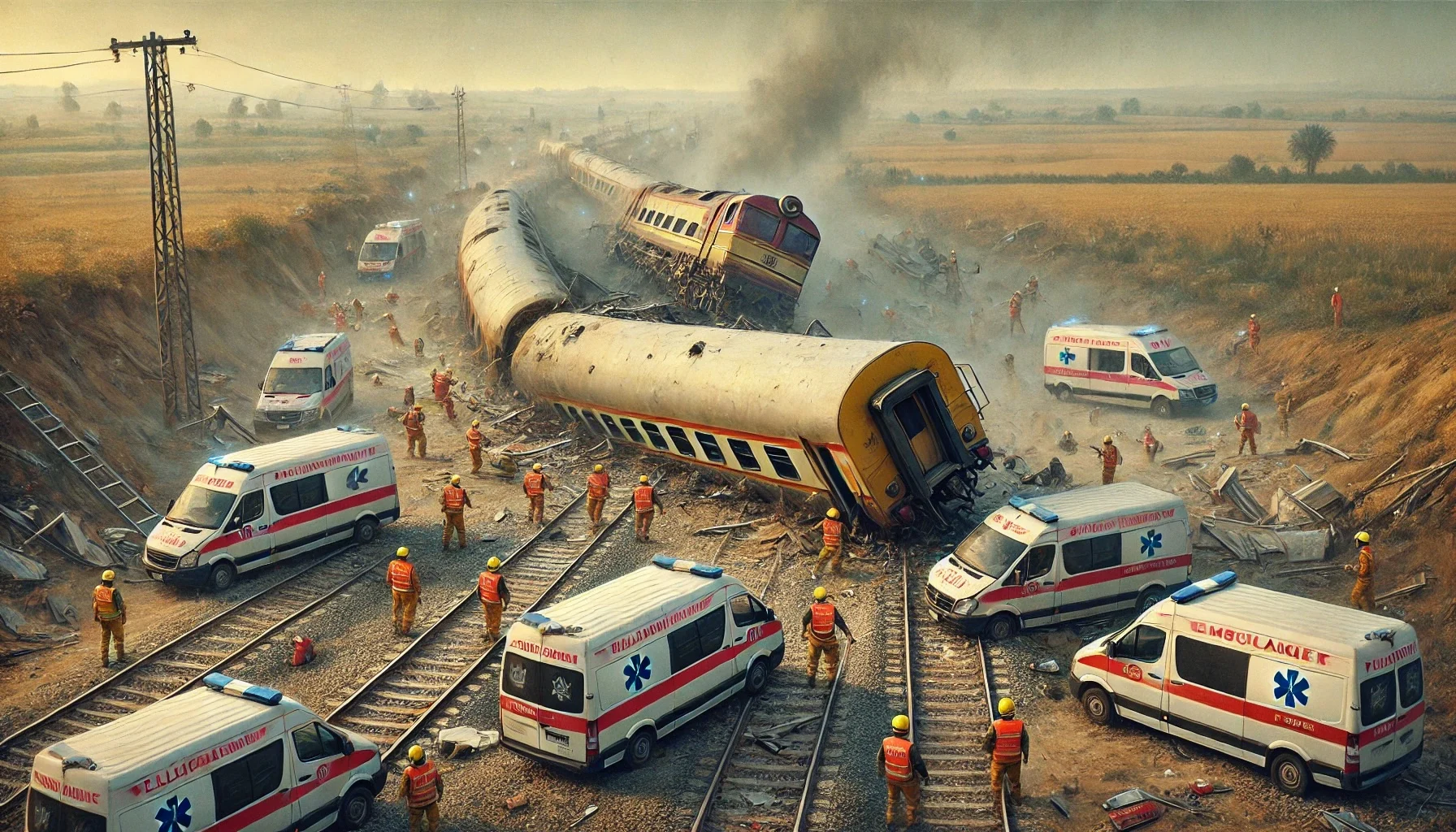
Alexandria Train Collision
by: The Calamity Calendar Team
August 11, 2017
In the quiet midday of August 11, 2017, a tragedy unfolded that would resonate throughout Egypt. Two trains collided in a catastrophic crash near Khorshid station, east of Alexandria. This accident, which claimed the lives of 41 people and injured over 179 more, was not just an isolated incident but a tragic reminder of the systemic issues plaguing Egypt’s railway system.
The Long Road to Disaster
Egypt’s railway network, among the oldest in Africa, has been a vital component of the country’s transport infrastructure. However, years of mismanagement, lack of maintenance, and outdated systems have taken their toll. The railways had been neglected for decades, with warnings about potential disasters growing increasingly urgent as accidents became more frequent. Before the collision near Alexandria, several high-profile incidents had already underscored the need for serious safety improvements.
The Day of the Accident
On that fateful day, two passenger trains were traveling towards Alexandria: one from Cairo and the other from Port Said. As the day unfolded, these trains were on a collision course with destiny. Reports indicated that the train from Cairo had stopped on the tracks due to a mechanical failure. Unfortunately, a second train, unable to avert disaster, collided into the rear of the stationary train, resulting in a catastrophic collision.
The impact was devastating, causing several train cars to derail and overturn. The scene was one of chaos and destruction, with twisted metal and shattered carriages littering the tracks.
Thanks for subscribing!
Immediate Aftermath
The collision sent shockwaves through the nation. Emergency services rushed to the scene, working tirelessly to rescue survivors and recover the bodies of those who had perished. Ambulances transported the injured to nearby hospitals, where medical teams struggled to cope with the sheer number of casualties.
The accident left a trail of destruction, with significant damage to the trains involved. Several carriages were completely destroyed, emphasizing the collision’s severity and highlighting the vulnerability of the country’s rail infrastructure.
A Nation in Mourning
The loss of life and the scale of the injuries brought Egypt to a standstill. Public outrage grew as citizens demanded answers and accountability. The government, already under pressure, faced criticism for its perceived failure to address the longstanding issues within the railway system. President Abdel Fattah el-Sisi ordered an investigation into the collision, and Egypt’s Minister of Transport, Hisham Arafat, vowed to hold those responsible accountable.
Investigations and Findings
Initial investigations pointed to a combination of human error and signaling issues as the primary causes of the crash. Faulty signals and miscommunication between train operators contributed to the disaster, revealing a dire need for comprehensive safety upgrades.
Despite the immediate response, the investigation’s findings underscored deeper systemic problems. Calls for substantial investment in railway safety and infrastructure modernization grew louder, highlighting the urgent need for reform.
Towards a Safer Future
In the wake of the tragedy, the Egyptian government pledged to improve railway safety, working with international organizations to modernize the system. Proposals included introducing modern signaling systems and implementing more rigorous maintenance protocols. However, progress has been slow due to funding constraints and bureaucratic challenges.
Ongoing Challenges
Despite efforts to improve the railway network, Egypt continues to face challenges. Accidents remain frequent, highlighting the need for sustained investment and comprehensive reforms. The Alexandria collision served as a stark reminder of the consequences of neglect and the critical importance of addressing the systemic issues that plague the country’s railway system.
Conclusion
The Alexandria train collision of August 11, 2017, was a tragedy that brought the vulnerabilities of Egypt’s railway system to the forefront. It underscored the urgent need for reform and modernization, not just for the safety of passengers but for the future of Egypt’s transport infrastructure. The lives lost and the injuries sustained serve as a poignant reminder of the cost of neglect, urging a nation to prioritize safety and efficiency in its railway network.
Stay in the Loop!
Become a Calamity Insider and get exclusive Calamity Calendar updates delivered straight to your inbox.
Thanks! You're now subscribed.